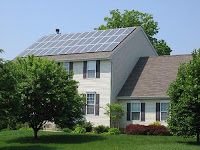Build Your Own Home Solar and Wind Energy System and Live on Free Energy Forever."
Dear Energy Consumer,
If you have ever wished to stop wasting money on your electrical bill, help the global economy and save the Earth, then you've arrived at the right page.
Home Made Energy is the website created to help you slash your electricity bill by 80% or even eliminate it completely!
With the costs of living increasing every year, there is no better time than right now to stop throwing money away and start saving money by generating your own electricity.
You need an open mind and willingness to listen, because there are large economic interests that keep people dependent on energy.
Over 90% of the energy that is consumed by US is NOT from renewable source.

The best choices when it comes to home power are solar and wind power. These count for only 0.2% of the energy that is consumed.
The facts are that most people don't know the benefits of generating renewable energy and how easy it is to build your own renewable energy system for yourself.
They just pay $1,000s a year in electricity without having a clue that there is a better way
and a cheaper way to generate renewable energy.
Luckily this is where we come in. Home Made Energy will teach you everything you need to have your own solar or wind power system for $200 or even less.
How Does It Work?
1. You will be able to choose between two different types of electricity generators, solar-based
and wind-based.
2. Inside the guide you'll get specific instructions on what is best to build, based on
your geographical location and the size of your house.
3. And this doesn't mean you need to build one or another.
4. You can easily build both systems and generate even more energy.
5. You will get the step-by-step diagrams on how to create each of the systems with very
little effort.
6. All the components can be purchased from your local hardware store.
7. And once you have the instructions, you will feel as if you have bought an Ikea package
and you just have fun while building it.
It's that simple!
Here Are 7 Reasons Why You Absolutely NEED Your Own
Home Made Energy
1. You will save hundreds of dollars a month, thousands of dollars a
year for the rest of your life.
2. You will help our environment.
3. You will have a lot of fun in building your own power systems.
4. You will be able to completely remove your home from the power grid if you want and know
that rising energy prices will not affect your energy bill because you will not have one.
5. You will be able to make the electricity company pay you for the surplus power that you
produce each month.
6. You will be able to protect your pocket book during these recession
times and spend money on more important things.
7. You will feel very good because you know you've done something great
and you will have the wisdom to be part of the solution, not the problem...
Home Made Energy Is On Sale For A Very Limited Time!
You won't find a better price anywhere else for such a complete and quality guide to create your own power system. It contains full instructions easy enough for even a technical rookie to follow. This technology is used successfully by hundreds of satisfied customers.






